Distance: 21.5 miles
On my first day of walking I set off from Southwark Cathedral, south of the Thames in London. It’s the place where Chaucer’s pilgrims start. However, knowing that this first leg was going to be a long day – more than 20 miles long – so I wasn’t going to have time to visit the Cathedral , so I went to see it yesterday morning instead.
Some facts: it was founded circa 860, then became an Augustinian Priory in 1106, a parish church in 1539, and a cathedral in 1905. Thomas Becket visited a few weeks before his murder and afterwards the monks re-dedicated their infirmary at St Thomas’s Hospital. There’s lots to see including the Chaucer and Shakespeare stained glass windows, and the tomb of John Gower, poet and friend of Chaucer.
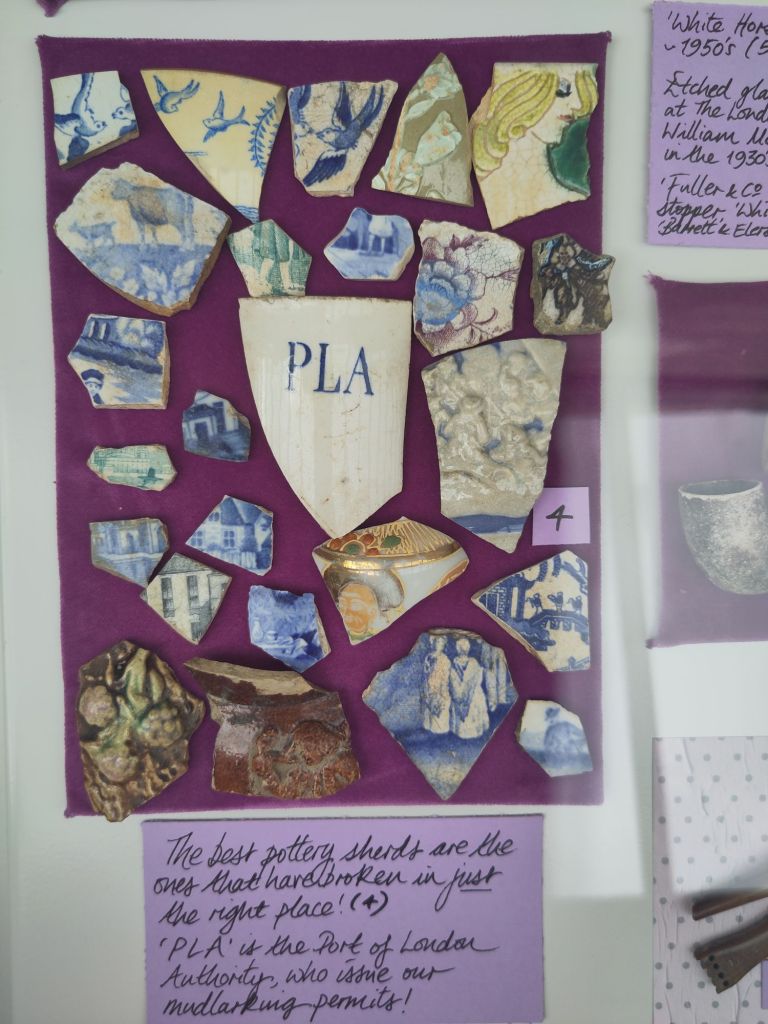
I was particularly interested in a lovely exhibition about mud-larking, displaying some of the finds that are fished out the Thames’ mud on a regular basis. It’s the lost things of past lives. We wonder what might remain of us after death, hoping it will be memories of the good that we achieved. Eventually though, there will be no-one left who knew us, so I find it pleasing that perhaps a small personal object that we once used and misplaced, loved and lost, or maybe even hated enough to throw away, might emerge from the water and end up on a stranger’s bookshelf.
Having temporarily abandoned my cat, Harriet, who does not take kindly to me going away, I was also keen to meet Hodge the Cathedral cat, an “extremely rambunctious, adventurous, and friendly cat”, who was adopted as a stray in 2020.
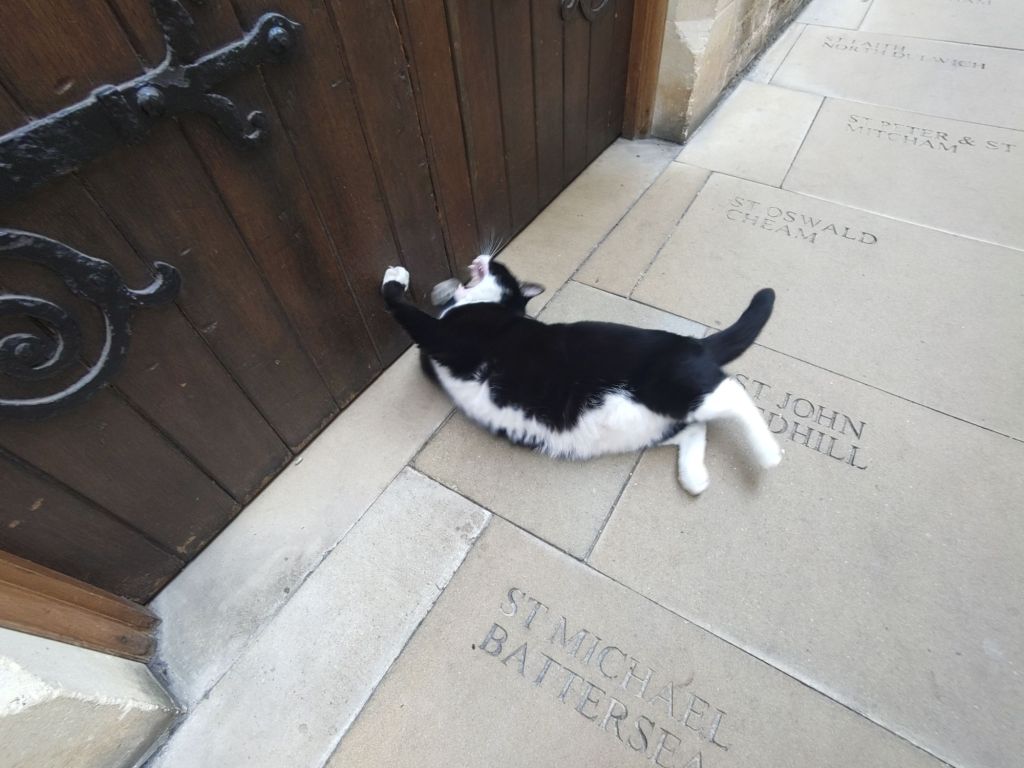
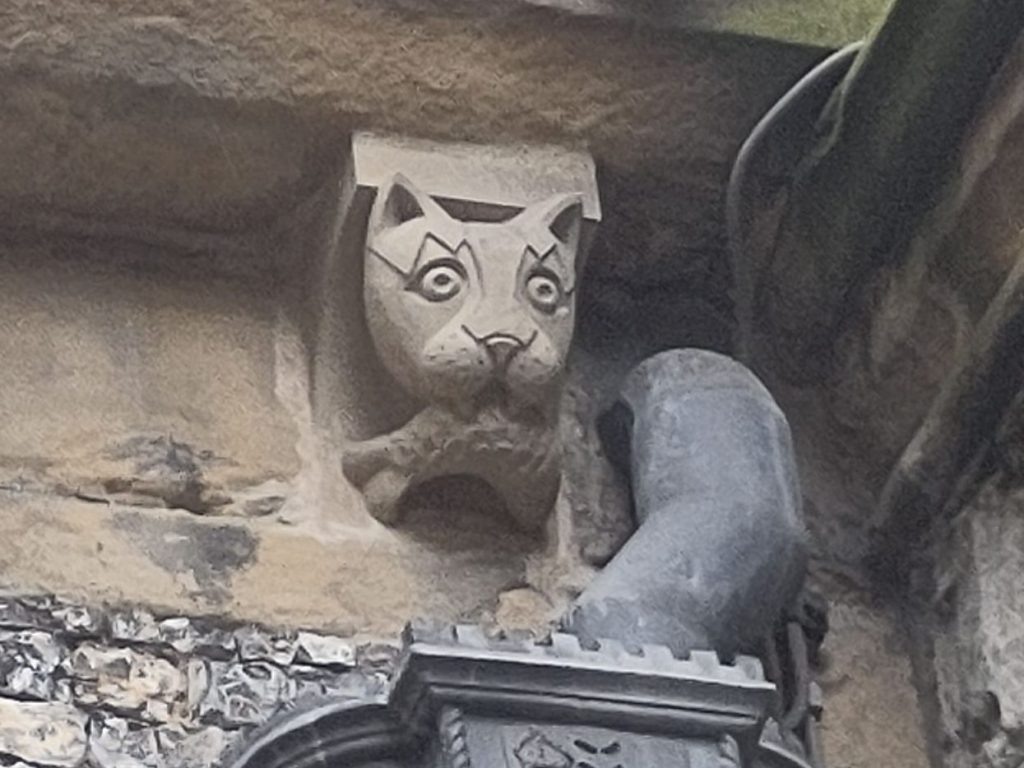
He replaced Doorkins Magnificat who made the Cathedral her home from 2008 and is now memorialised in a charming sculpture under the eaves.
Hodge is named for one of Samuel Johnson’s cats. Johnson was a frequent visitor to Southwark and is commemorated in a stained glass portrait. He had many legacies – the dictionary, his literary criticism, the bon mots – but I think this portrait of him, gently teasing his beloved/pesky puss, speaks through the ages:
Boswell recollected Hodge, “scrambling up Dr. Johnson’s breast, apparently with much satisfaction, while my friend smiling and half-whistling, rubbed down his back, and pulled him by the tail; and when I observed that he was a fine cat, saying, ‘why yes, Sir, but I have had cats whom I liked better than this’; and then as if perceiving Hodge to be out of countenance, adding, ‘but he is a very fine cat, a very fine cat indeed’.”
Doorkin’s sculpture is described by the Cathedral website as “a lasting tribute to the animals who care for us as we care for them.”
Harriet came to us – my partner Graham and I – from the Cats Protection during COVID-19 lockdown, shy, timid and scared. Graham spent hours lying on the floor trying to coax her out from her hiding places with the promise of treats and affection. Eventually she responded and devoted herself to him, with such affection it was disconcerting at times.
Graham died last year. SoHarriet had to get accustomed to living only with me, a human she had considered secondary to her requirements until then. But we’ve adapted and refashioned our relationship – by which I mean I have bent to her will – and in what has been a time of great distress for me, she has indeed given me care.
So, yes, Graham died last year.
And that’s the big reason for walking. We were together for 14 years, and he was just 56 when he died. Over the past year I have grieved for him, and for myself, the loss of our life together, and the denial of the time that he should have had. I don’t expect this walk to banish my grief but I do hope that it will be a meaningful ritual of mourning, of slowly, gently and mundanely pushing on, forward through space and time.
But today’s journey only got me to the outskirts of London, and there were plenty of sights to see along the way. I was walking with a dear friend, and we were also joined for part of the time by his also dear wife. Both of whom sustained me in what was quite an arduous trek!
We walked down from the Cathedral and passed the George Inn, a 17th century coaching inn in Borough High Street. It was too early for opening but several of my overnight stays along this way will be at these old inns, the regular stopping places for the passenger and mail coaches. In Tabard Street, we passed the site of the Tabard Inn where Chaucer’s pilgrims first met and adopted their plan to each tell a story as they travelled.
This part of the route follows the line of an even more ancient pathway than the Pilgrims’ Road – the Roman road Watling Street, which connected Dover and the south coast to London and Wroxeter in the west of England.
St George’s Church, where Henry V stopped after Agincourt, having given thanks at Becket’s tomb, is London’s oldest church named for St George. The oldest in England is at Wrotham which is where I’ll be tomorrow. (Inshallah). We marched along the Old Kent Road, and I was excited to reach the former North Peckham Civic Centre to admire the 1960s ceramic mural by Adam Kossowski, a Polish artist who also created work at Aylesford Priory (further along the Way) to give thanks for his release from a Soviet labour camp.
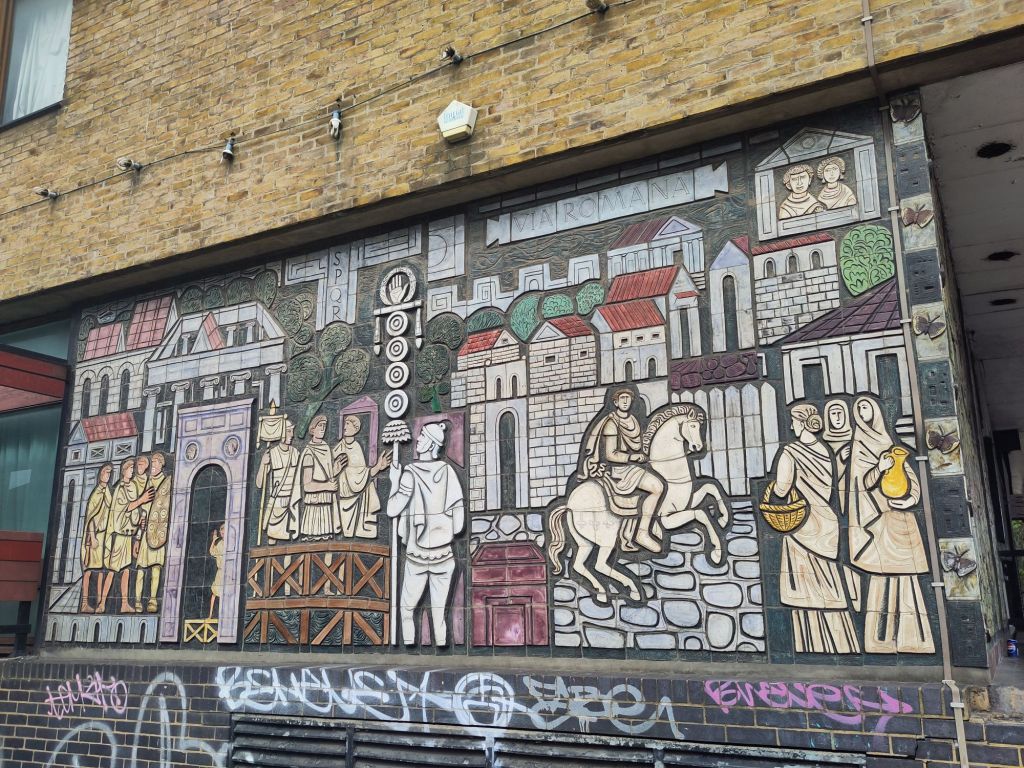
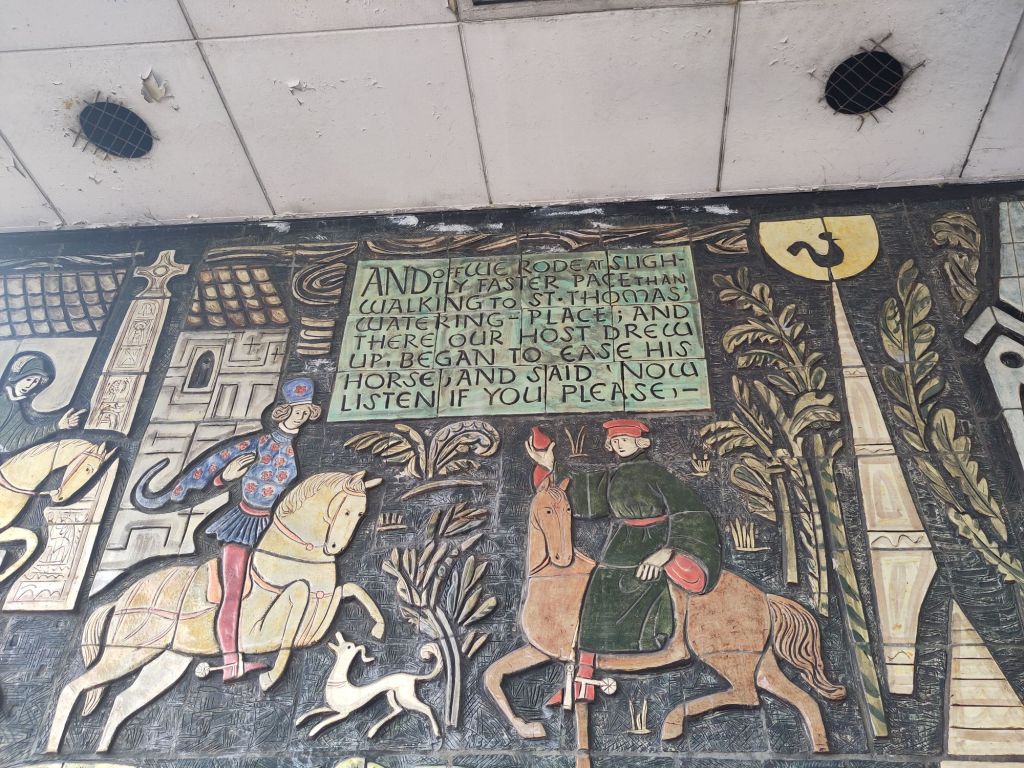
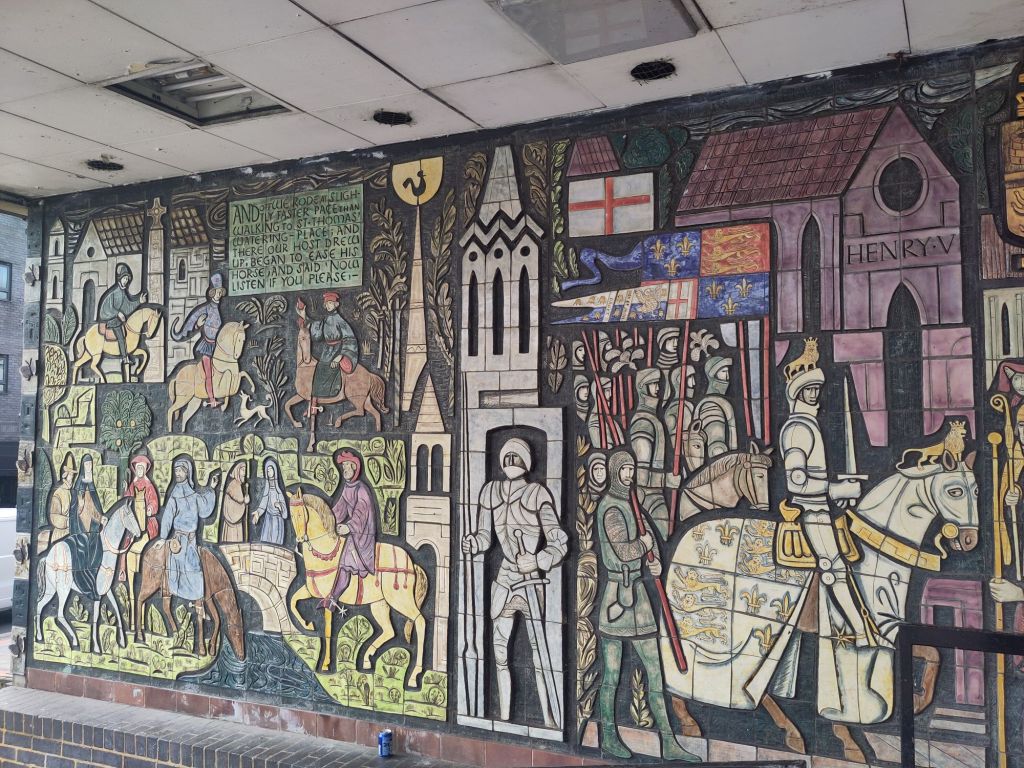
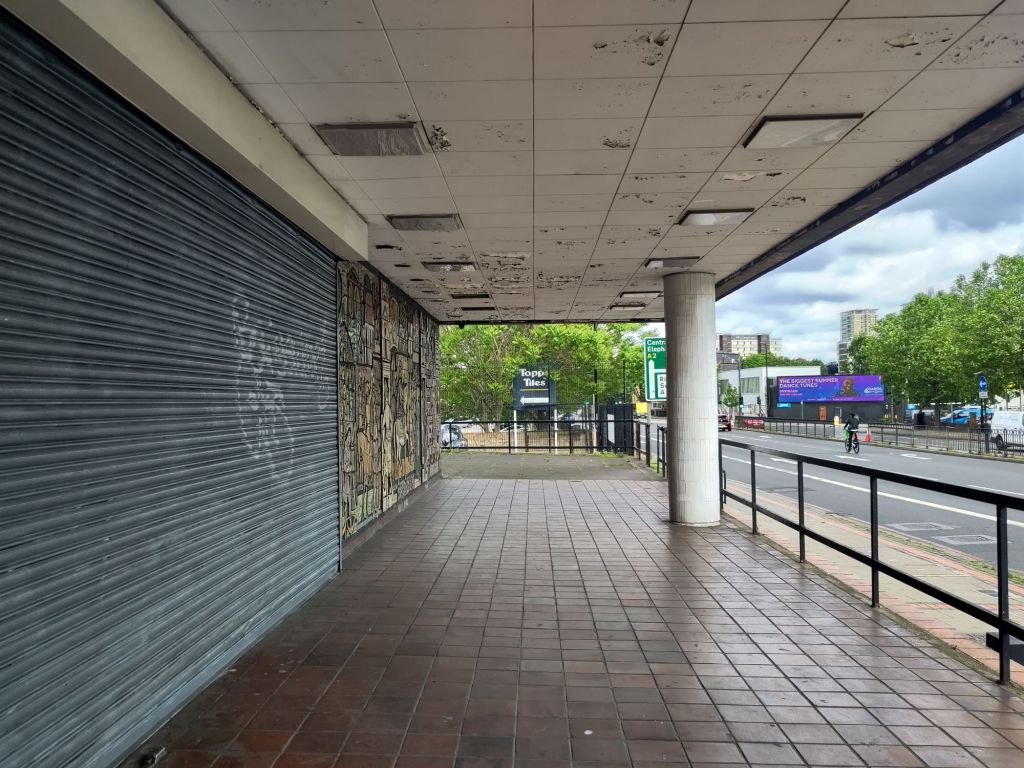
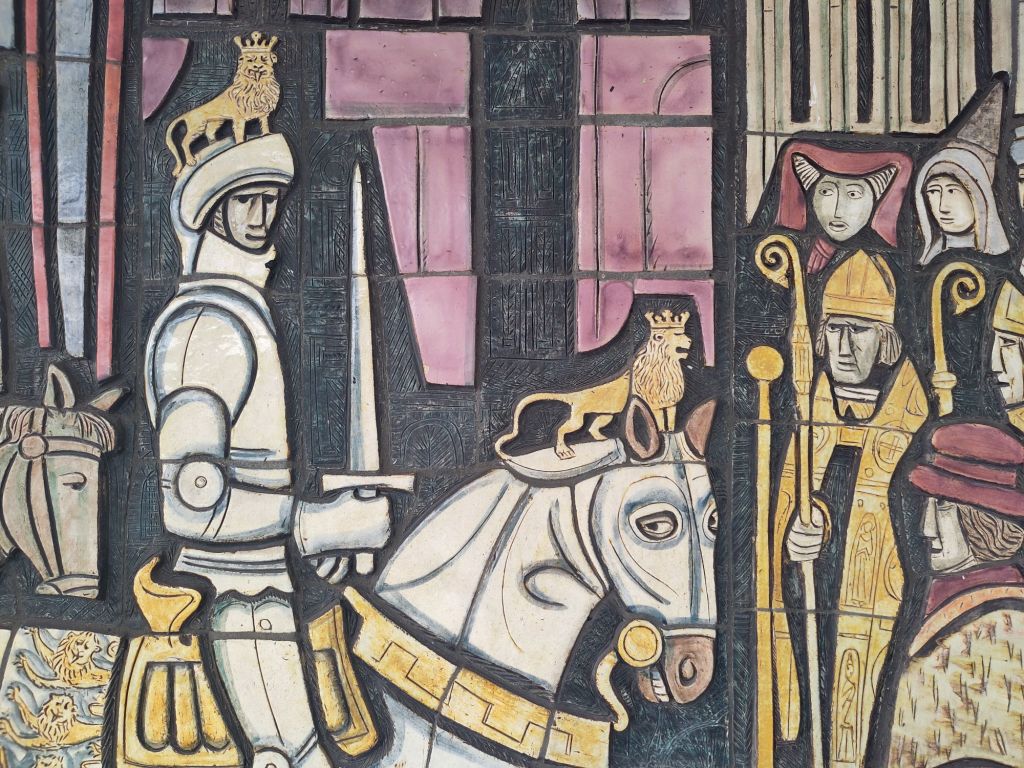
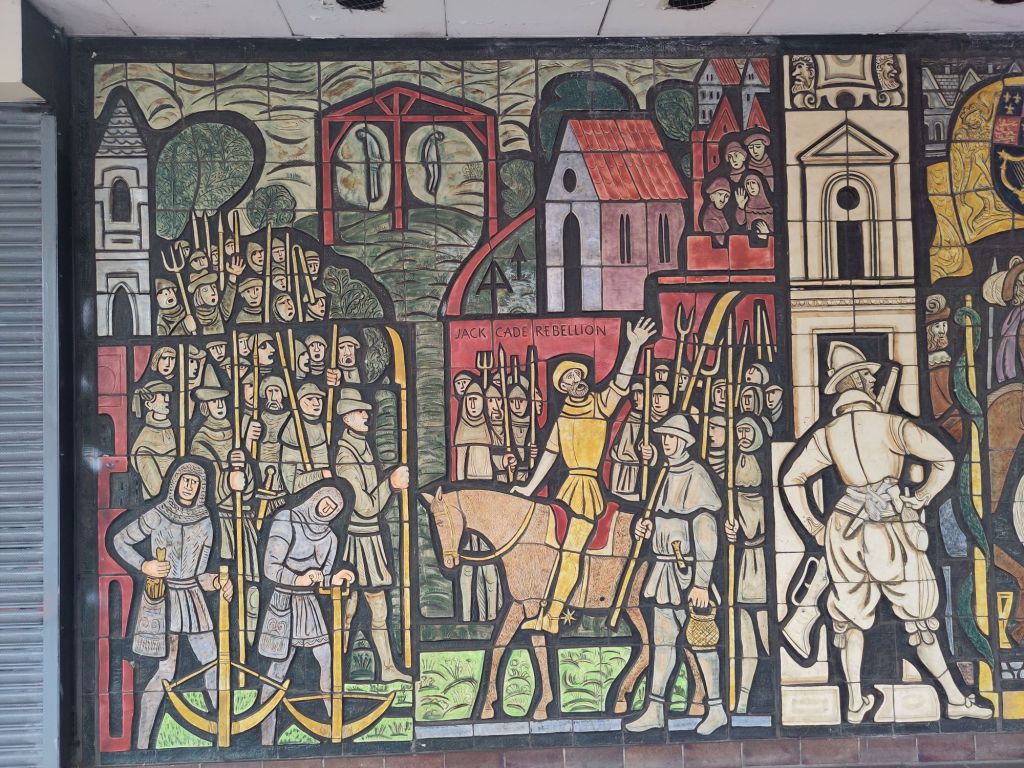
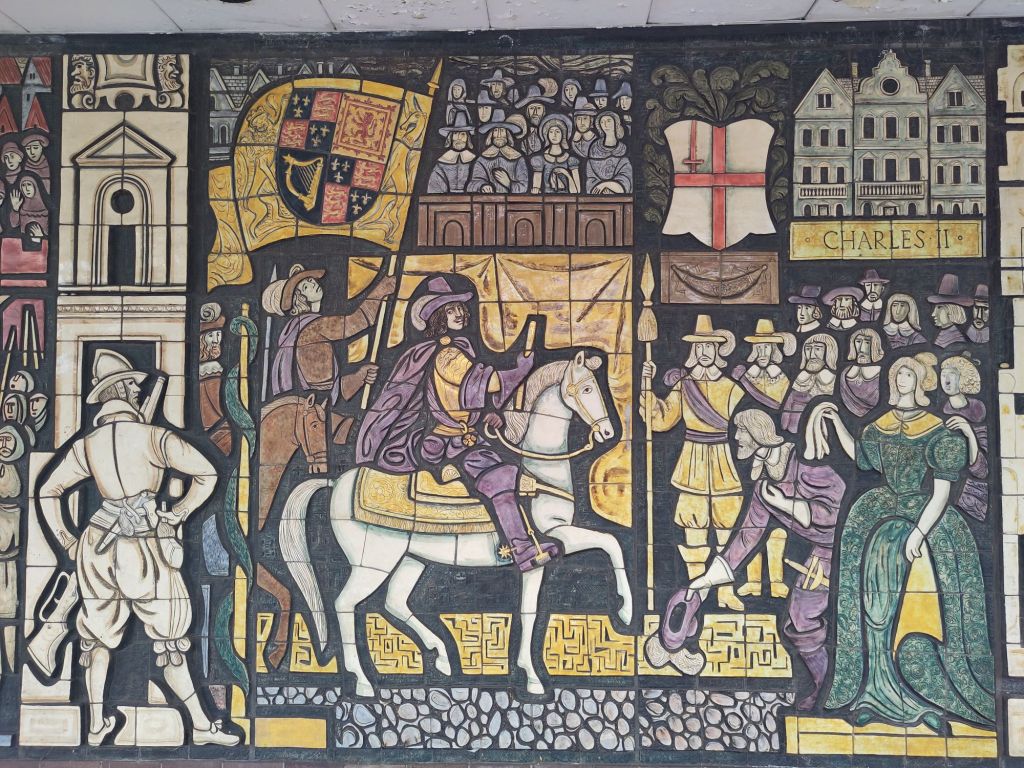

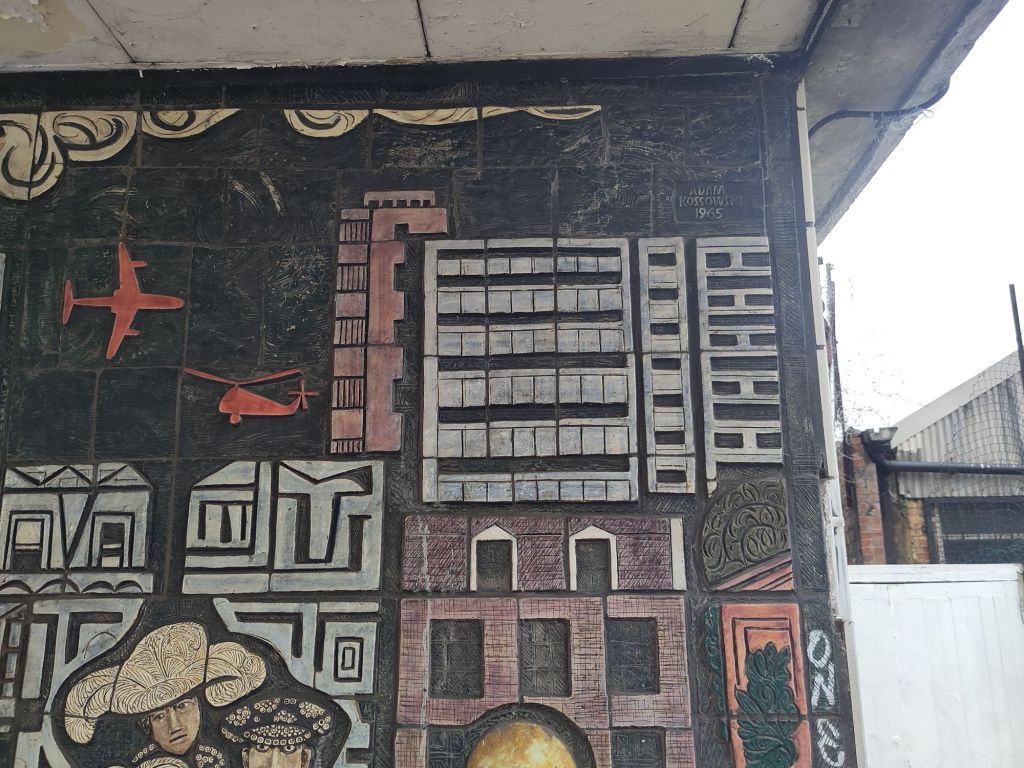
We navigated Blackheath and ascended Shooters Hill. This was the first sight of London for people travelling up from Dover, and the last view of London for pilgrims travelling out of the city. Lunch was at the ruins of Lesnes Abbey, founded by Richard de Luci, Chief Justiciar of England in 1178 as penance for his role in the murder of Thomas Becket, Archbishop of Canterbury, and admired the 400 year old Mulberry tree., part of an ill-fated venture by King James I and VI to establish a British silk industry.
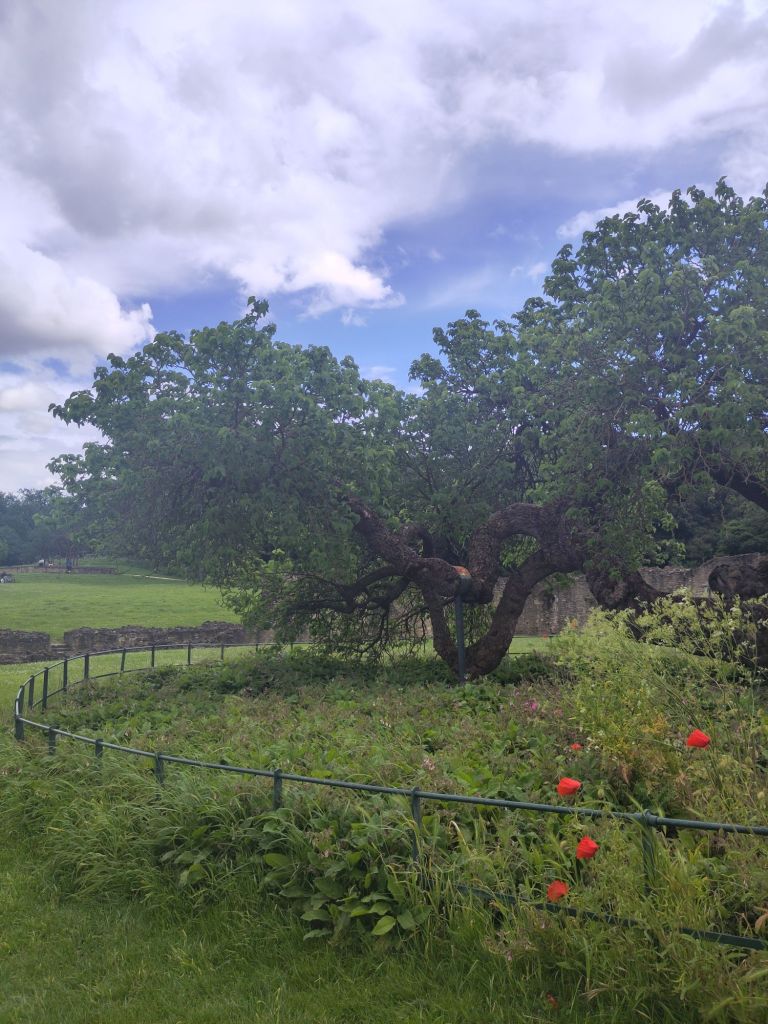
This is where the rain started. But undeterred, we walked through suburbs to reach Erith, where we admired the ancient – originally 12th century – St John the Baptist Church and finally made it to the banks of the Thames, to gaze on its muddy waters in the now driving rain. I loved the grey water, the concrete walkway, the big ship heading out to open waters, the relics of pas industry, and the huge deep water pier, an impressive leftover from the days of day trippers coming from London for a fun time down the river!
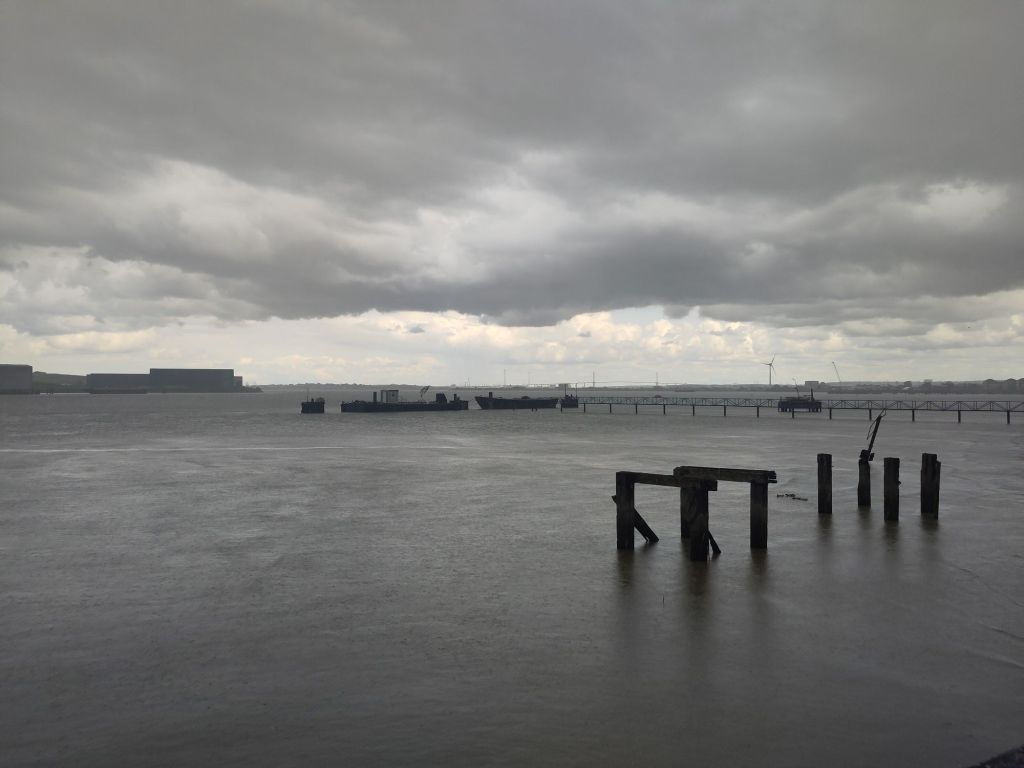
But my absolute favourite part of the route – apart from the Kossowski mural – was the Crayford Saltings. It’s a large spur of salt marsh and reclaimed land, home to recycling centres and scrap metal dealers, some horses, and lots of birds.
Quite a lot of the Pilgrims’ Way route winds through suburbs, skirts round the edges of places, clings to the concreted riverside, jouks through housing schemes and industrial estates. At Crayford Ness there’s a navigation radar mast and a massive concrete tidal flood barrier.
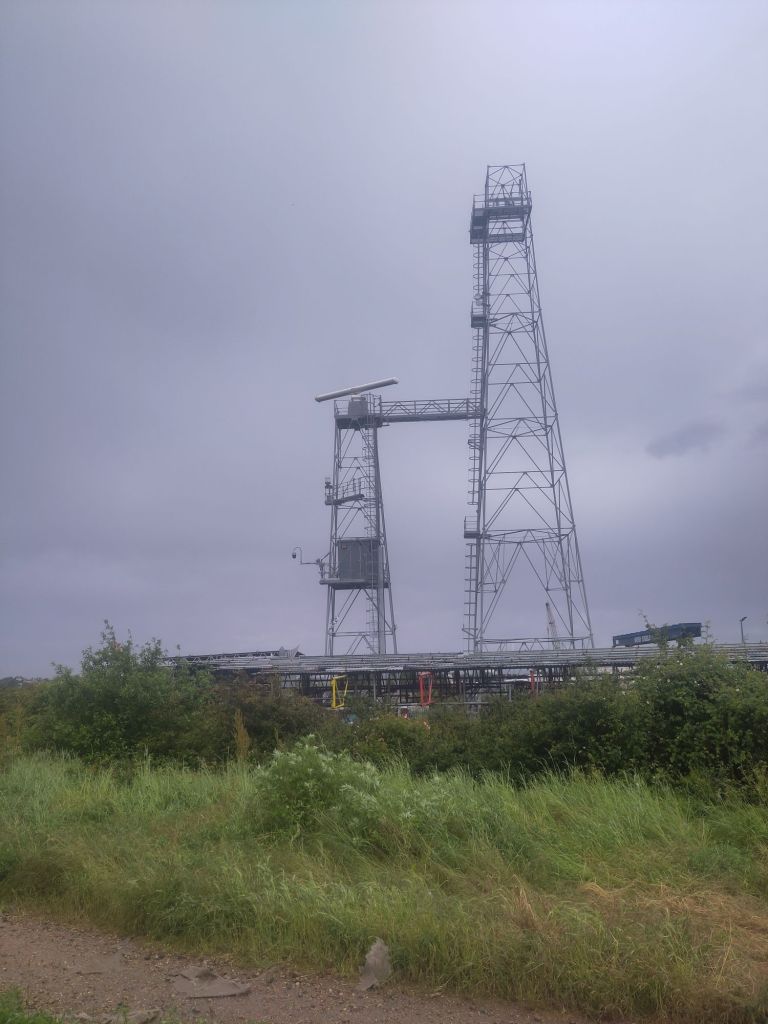
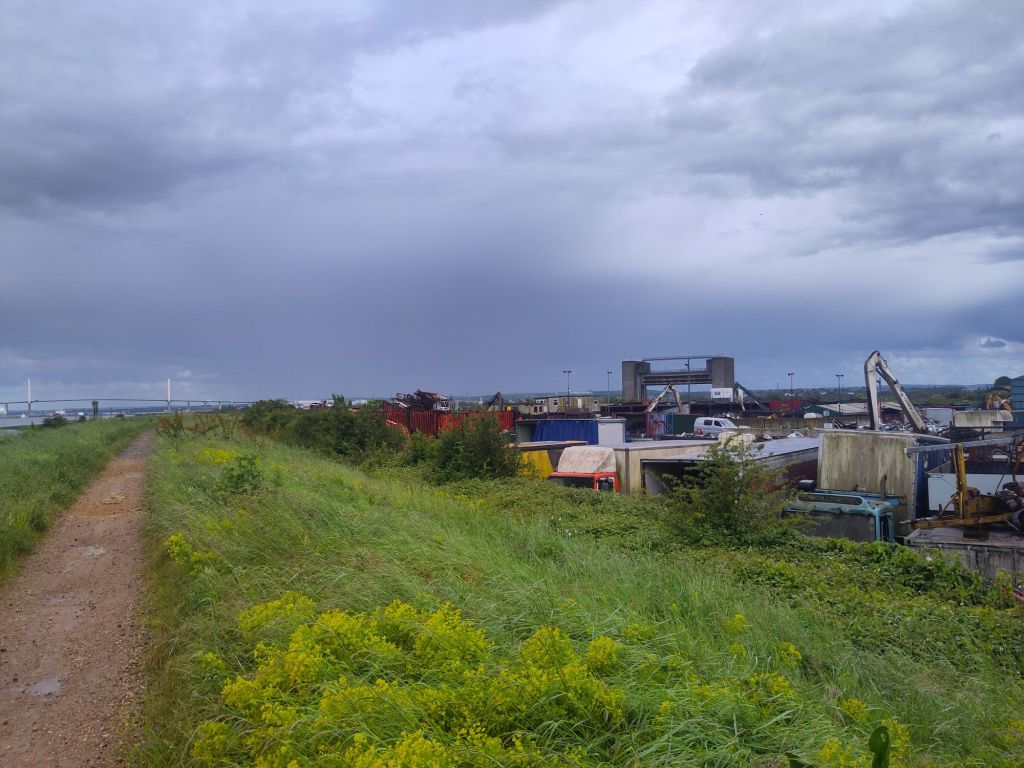
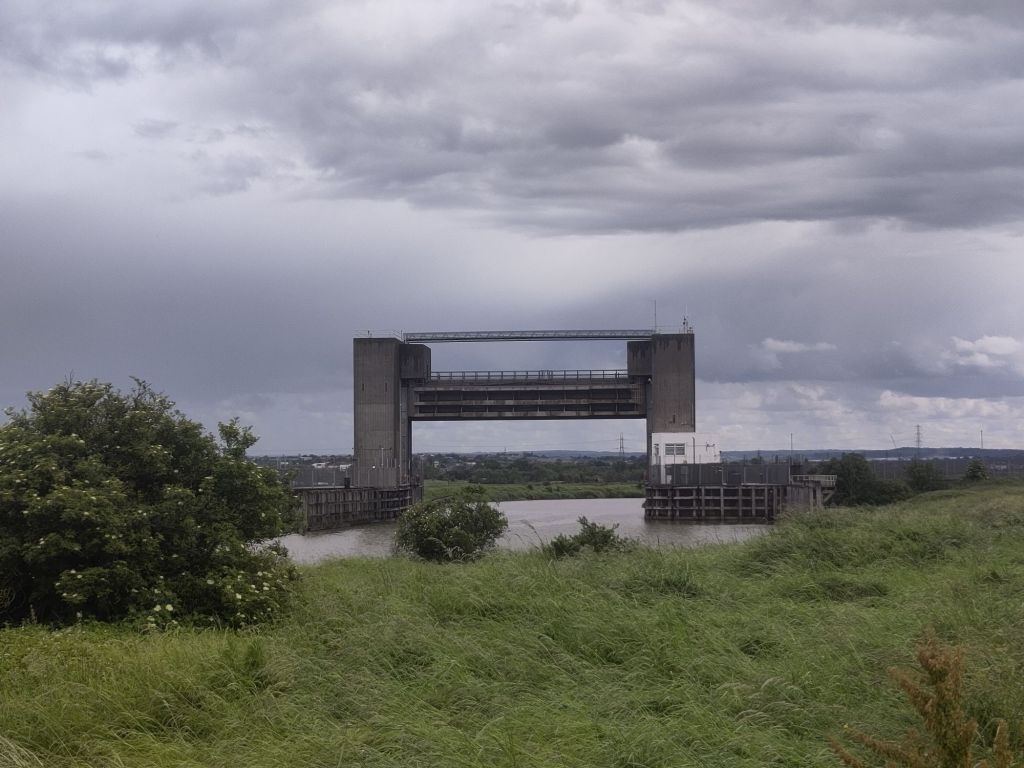
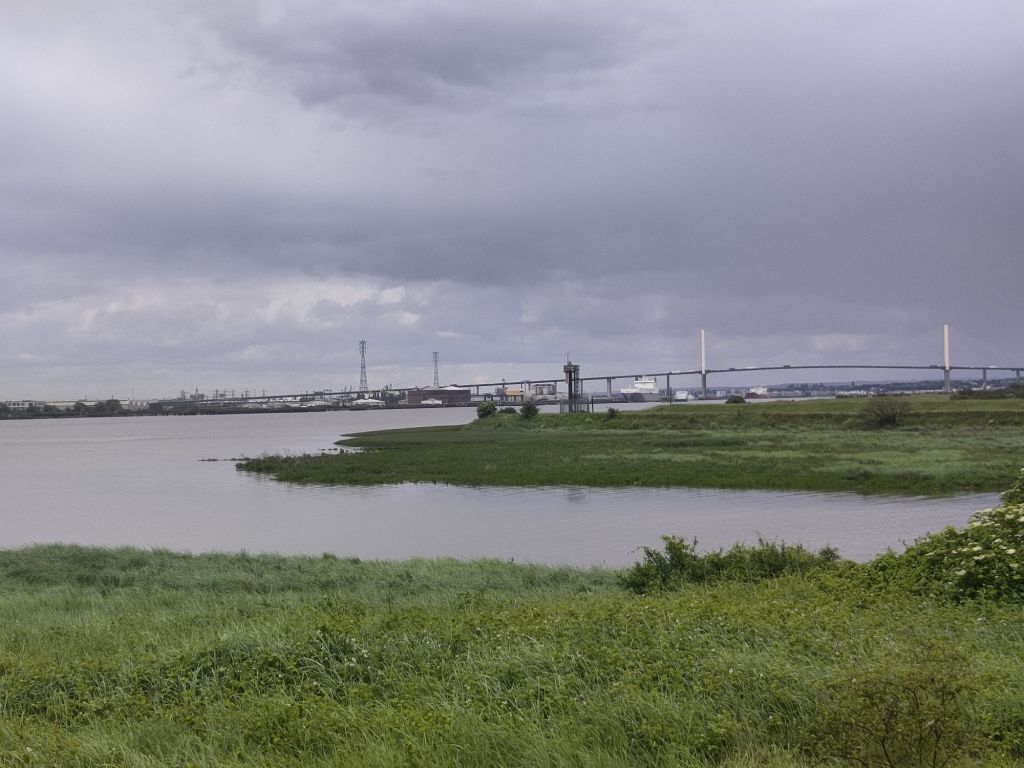
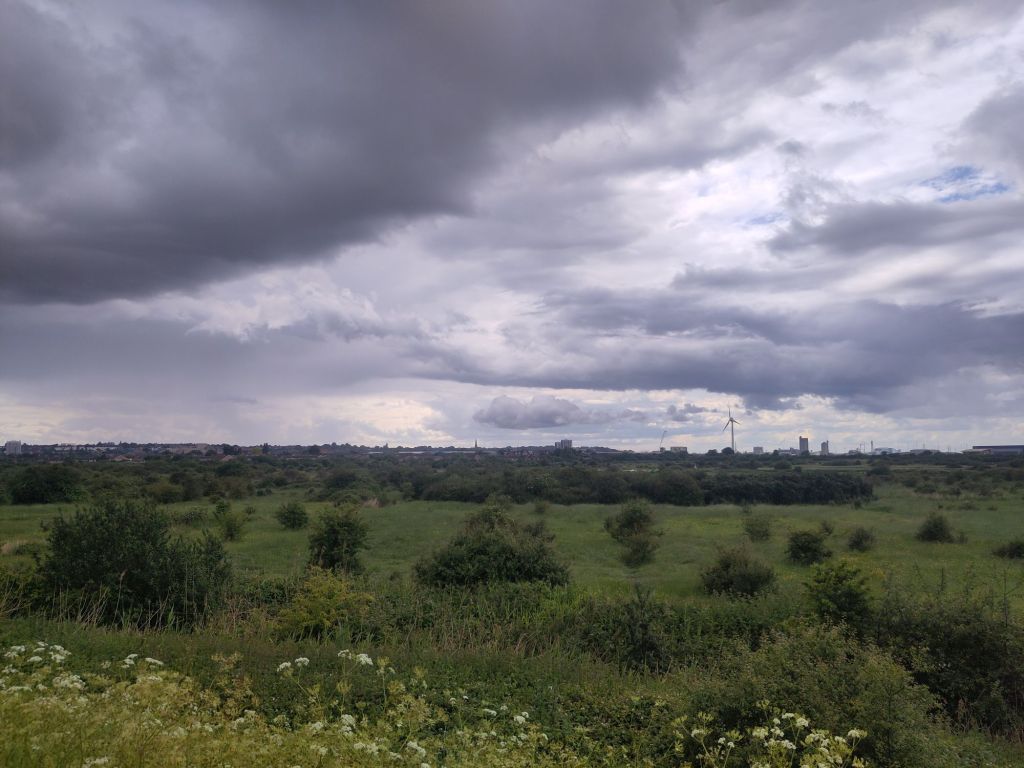
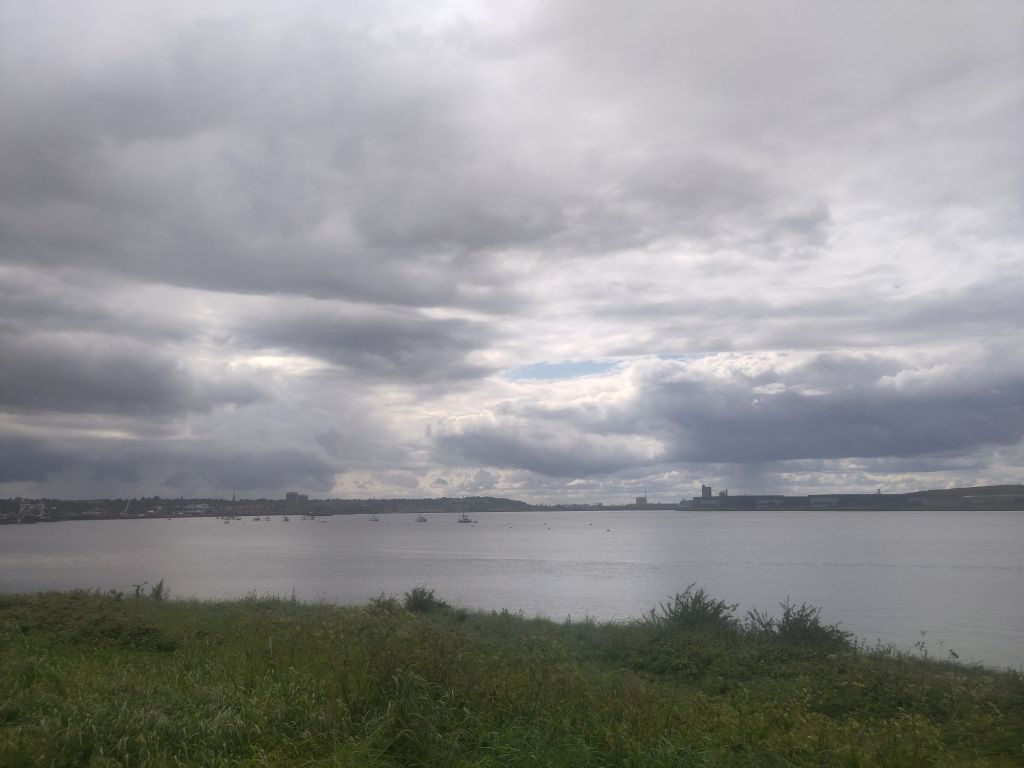
Not likely places for meaning and mystery you might think. But as Gareth E. Rees points out, narratives constantly evolve and stories are layered one atop another.
The stories of previous epochs haven’t disappeared…, even when buildings have been demolished and their inhabitants are long dead. They can be found in old mine shafts and cursed wells beneath housing developments, Roman ruins beneath service stations and Victorian houses trapped within industrial sprawls. They’re in roundabouts that have replaced historical crossroads, the car parks built on former cemeteries, and the steel factories operating where monasteries once stood. They’re in the artworks, both sanctioned and illegal, that celebrate a location’s history. They’re in the memories passed down through generations. They’re in the tales we tell. As the geographer Doreen Massey once said, Space ‘is always in the process of being made. It is never finished; never closed. Perhaps we could imagine space as a simultaneity of stories-so-far’. That narrative constantly evolves. Flyovers that once destroyed urban communities have themselves come to harbour new communities of artists, outcasts and ravers with their own myths and legends. Long-reviled transmission masts, pylons and chimneys have become ingrained with tragic events, haunted by their own kinds of ghosts.”
Unofficial Britain. Journeys Through Unexpected Places. By Gareth E Rees, 2020, Introduction, p xviii -xix
These are some of the sorts of places that Graham was interested in: industrial buildings, new towns, concrete architecture, 1960s public art. I feel strongly, perhaps a little desperately, that being in these landscapes gives me a continued connection to him.
Every place has its own mystery and the past lurks in the ground under our feet and in the buildings around us, no matter how old or new.
This evening’s stop is Dartford. It’s the location of the discovery of the skull of Swanscombe Woman, a very rare example of human remains dating from 400,000 years ago. And I’m staying at the Royal Victoria and Bull Hotel in Dartford. It’s believed there has been an inn here since the 14th century, called The Bull and owned by Dartford Priory. The current building dates from 1703 and originally had a first floor gallery around the courtyard – a remnant of it is still visible in the bar – and an entrance at the front wide enough for two carriages.
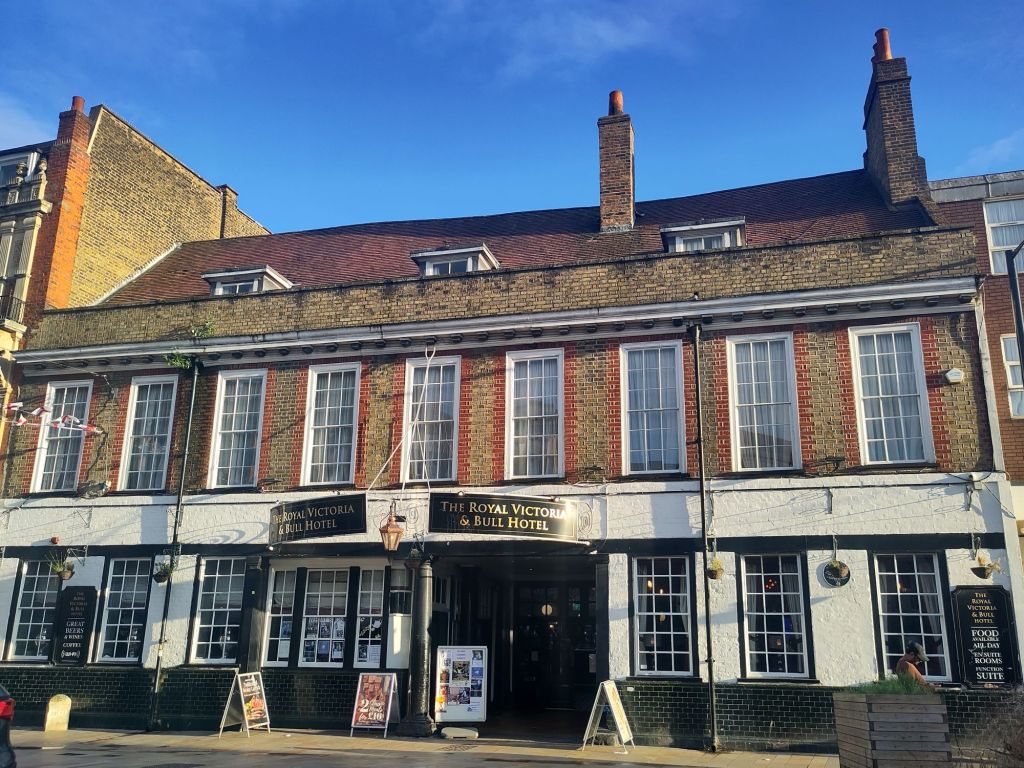
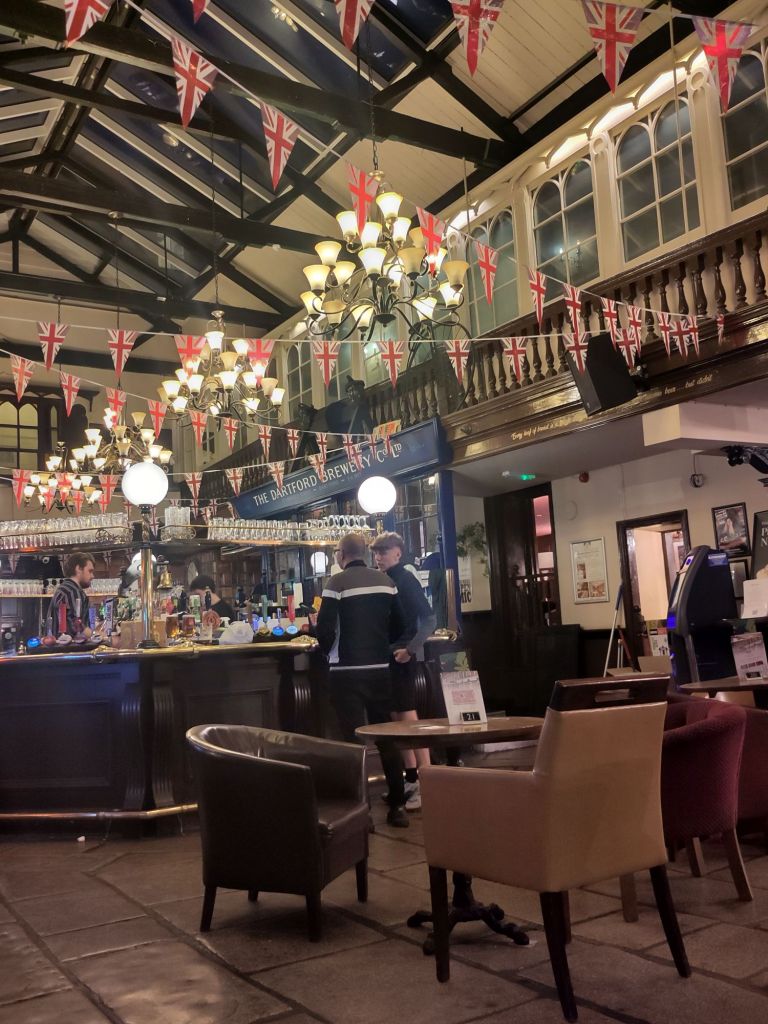
It has hosted many well-known guests including novelist Jane Austen who stopped here often on her way to visit relatives and Richard Trevithick, the Cornish engineer who constructed the first working railway steam locomotive in 1804, and who died here in the inn in 1833. They weren’t here at the same time but imagine the chat if they had been! And that’s one of the things this place is now; a location making a connection through the years between us and them. One might even say it’s a time machine.
Treasure waits for us everywhere, in the most mundane places.
See all of this day’s photos on Flickr
Next post: Walking the Pilgrims’ Way day 2: Dartford to Wrotham
Preceding post: Walking the Pilgrims’ Way: Prologue
Lovely thoughts of Graham. I still find myself looking for him at gigs.
LikeLiked by 1 person
There’s a curious beauty in ugly urban and industrial settings; salt marshes and scrap metal recycling. Additionally, it is courageous of you to share such a personal journey. May peace travel with you.
LikeLiked by 1 person
Gorgeous storytelling.
LikeLiked by 1 person